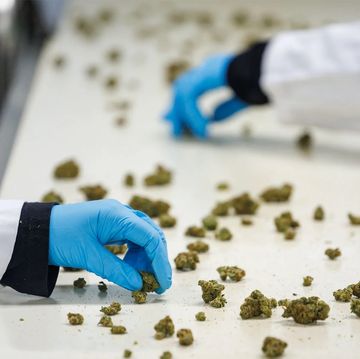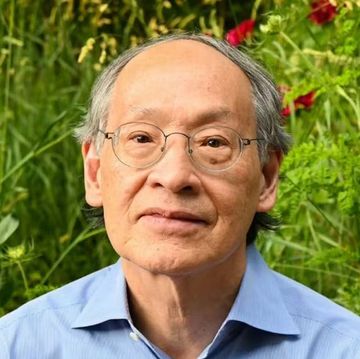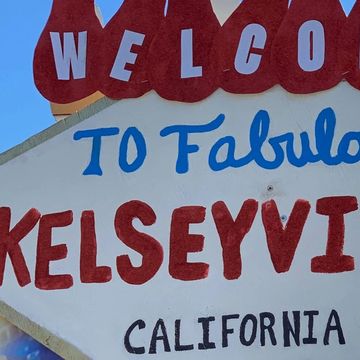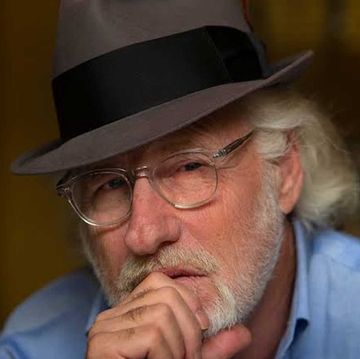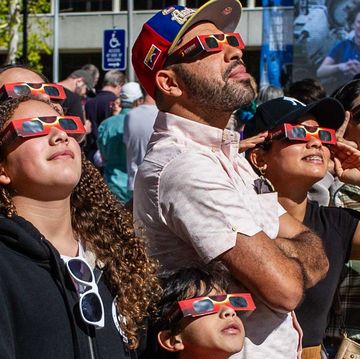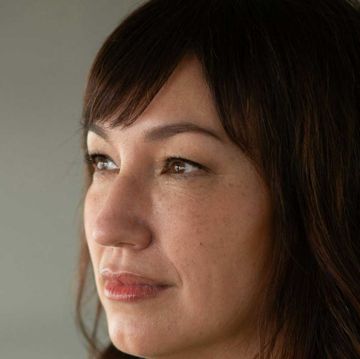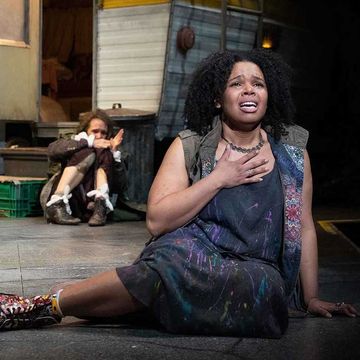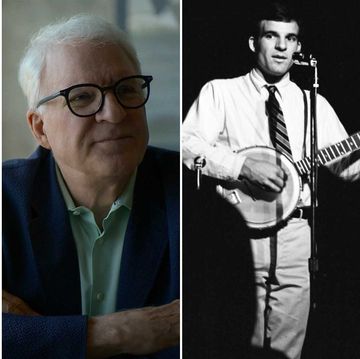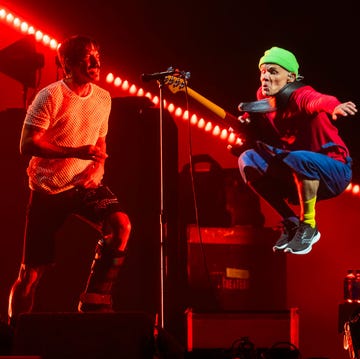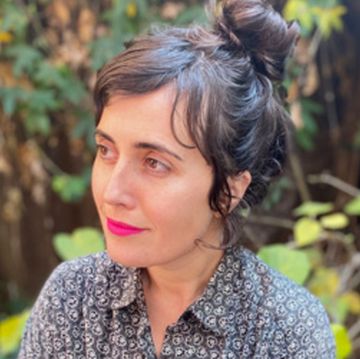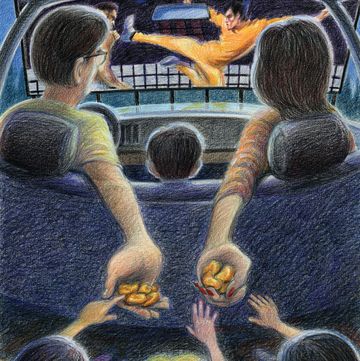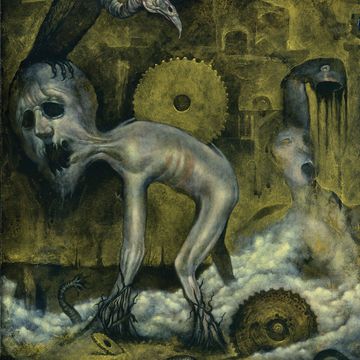Now Then. Those words demand attention: “Now then, I have something to tell you.” What I have to tell you is that Ed Ruscha adds to that phrase in endlessly inventive ways in his captivating retrospective—titled Now Then. After a critically lauded run at New York’s Museum of Modern Art last fall, it opens April 7 at the Los Angeles County Museum of Art.
The show’s title connotes the passage of time, a theme Ruscha has pursued more consistently as he, the handsome star of the 1960s Los Angeles art scene, has gained gravitas, respect, and graying hair. For some, the show got confused with the new Beatles release “Now and Then,” with its record sleeve designed by Ruscha. (Paul McCartney is a serious collector of contemporary art; Ruscha also did the cover for McCartney III.) And there is the 2005 book of Ruscha photographs documenting Hollywood Boulevard, Then & Now. All these titles are rooted in Ruscha’s fundamental interests: the multiplicity of meaning and syntax in words.
This article appears in Issue 27 of Alta Journal.
SUBSCRIBE
The exhibition features more than 200 works, including monumental paintings, inventive prints, delicate drawings, and small books of Ruscha’s black-and-white photographs, like the groundbreaking 1963 Twentysix Gasoline Stations, which is just that. Sixty-five years of consistency and change. The show provides ample proof of the 86-year-old artist’s unparalleled meld of creative oddity and technical refinement. Now Then is also a model of editing, since Ruscha’s paintings alone fill seven volumes of catalogues raisonnés to date. Words rarely fail him.
The use of language by artists is a long-standing interest of Christophe Cherix, MoMA’s chief curator of drawings and prints. The distinction may be subtle to the layperson, but attention paid to Ruscha’s works on paper shifts the show from Top of the Pops to Serious Art History. “The idea of the exhibition was to really try to bring out the work in a different way,” Cherix says. “To me, other exhibitions always felt very medium-specific, very fragmentary. And I felt that Ruscha was sometimes too locked into specific tendencies.”
The same approach will be followed at LACMA, since the retrospective was cocurated by the museum’s director, Michael Govan. “It’s one show in two cities,” he says. “Most of the works are the same.”
THEN
In the beginning were words, paintings for which the artist is best known: Boss (1961) in black impasto letters on a smooth chocolate background. (A variation of Boss sold last fall for $39 million at Sotheby’s.) Honk (1961–62) in turquoise on gray; Oof (1962), yellow on navy; Smash (1963), yellow on dark navy.
Before conceptual art was coined as a descriptor of art that prioritizes ideas, Ruscha was driven by language. His mother kept a dictionary in the dining room for regular use. Not only words’ meanings but also their sounds. Words as they were heard on the radio growing up in Oklahoma City, words sung in songs, spoken by disc jockeys, by sports announcers, by his songwriting childhood friend, Mason Williams.
Two years after his father, Edward Joseph Ruscha III, an insurance adjuster, died in 1959, Edward Joseph IV, his brother, Paul, and their mother went to Europe, where they drove to the major cities of 11 countries, including France, England, and Yugoslavia. Ruscha took photographs not of Big Ben or the Mona Lisa but of mundane items like parking signs. It’s as though the 23-year-old was already fully formed as an idea-oriented artist. Ruscha was listening and thinking before a stroke of paint went onto a canvas.
His lettering skills had been honed at Chouinard Art Institute in L.A., now CalArts, where he studied from 1956 to 1960, initially as preparation for working in commercial art. That was his father’s idea, since it was known as a training school for future Disney animators. Ruscha soon preferred the fine art department, with its renegade teachers like Robert Irwin, who showed at the newly opened Ferus Gallery.
In 1962, Ruscha and his friend Joe Goode hitchhiked to New York, where they met emerging pop artists Andy Warhol, James Rosenquist, and others. “You know,” he told the late critic Dave Hickey, “we found out that we weren’t crazy, or at least that we weren’t crazy alone. It was great!” That same year, his word paintings were selected for the country’s first pop art exhibition, New Painting of Common Objects, organized by Walter Hopps for the Pasadena Art Museum.
Yet Ruscha’s art had less to do with pop culture than it would with a more revolutionary show organized by Hopps: the 1963 Marcel Duchamp retrospective also at the Pasadena museum. (See “John Coplans’s Artforum” for more on the early L.A. pop art scene.) Ruscha and his L.A. contemporaries knew about the French founder of Dada, who, in 1917, had decreed an upside-down urinal to be sculpture, who had given up art to play chess, and who stated that art was whatever an artist said it was. Yet few people in the United States had seen his actual art until Hopps was able to arrange the show through a shared friendship with pioneering collectors Walter and Louise Arensberg.
The venerable Duchamp attended the black-tie opening, as did Warhol; actors Dennis Hopper and Brooke Hayward, then a married couple; and artists Goode, Irwin, Billy Al Bengston, and others showing at Ferus, which was cofounded by Hopps with artist Ed Kienholz. Ferus’s dynamic proprietor, Irving Blum, was also there. It is not too much to say that the show had a seismic impact on L.A. artists and the way the scene developed thereafter. Ruscha was not alone in being liberated from the lingering dominance of abstract expressionism.
“[Dada’s] nonsense was synonymous with seriousness and I’ve always been dead serious about being nonsensical,” recalls Ruscha in the MoMA catalog, Now Then: A Retrospective.
Language, especially double entendres, was key for Duchamp, whose alternate identity dressed as a woman and was named Rrose Sélavy (rose, c’est la vie). For that character, Duchamp had been photographed in a woman’s hat and makeup by Man Ray. Dada artists used photography as a tool, not an aesthetic product. Ruscha pursued a similar sort of anti-aesthetic documentation of apartment buildings and gas stations but also the vernacular of L.A., like vinyl records, palm trees, and swimming pools. The photographs are notable for presenting the entertainment capital of the world without a scintilla of glamour.
Ironically, Ruscha published these photos in small books, the size of paperbacks, just a few dozen pages in length. Without words. “They were some of the toughest things I’ve done,” he told me in 1990. “They operated in a medium that had no art life. I got to design my own covers, which is really what I’m doing in my paintings. Every painting is a potential book cover. Makes me wonder what the book should be about.”
The retrospective includes cases of photographs from Ruscha’s massive if mad project of photographing many miles of Sunset and Hollywood Boulevards and other L.A. streets. They are on loan from the Getty Research Institute, which has more than 750,000 negatives.
Throughout the late ’60s, Ruscha’s output could barely keep up with his ideas at his small Western Avenue studio. He started showing with Ferus. On the side, he worked various jobs, including layout designer for Artforum, then based in L.A. He used the pseudonym Eddie Russia. A measure of stability meant marrying Danna Knego at a Las Vegas wedding chapel in 1967. Their son, Edward Joseph Ruscha V (known as Eddie), was born a year later. (Ruscha also has a daughter named Sonny Ruscha Granade.)
In the 1970s, suffering from what he called “oil on canvas fatigue,” Ruscha began exploring unconventional substances, using gunpowder to draw fragile-looking words shaped like ribbons. The more extreme Evil (1973), a palindrome of “live,” was painted with his own blood on red satin. Other works were made with food on fabric, like egg yolk on blue moiré. “The important thing is to believe in what you are doing, even if it is absurd,” he told Paul Karlstrom in Leave Any Information at the Signal (2004). “Most people’s rational consciousness prevents them from doing what they should have blind faith about.”
Ruscha’s most elaborate exploration of the edible was Chocolate Room. In 1970, as he started showing with Leo Castelli in New York, he was selected for the Venice Biennale. It was a politically charged time owing to America’s involvement in the Vietnam War, and Ruscha’s response was anything but straightforward. He concocted an installation that was simultaneously absurd, temporary, and enticing: a room lined with sheets of paper dipped in melted chocolate. The odor lingered and charmed until the arrival of ants. Visitors used their fingers to draw antiwar messages on the matte sweet shingles.
The Museum of Contemporary Art in Los Angeles owns the exclusive rights to re-create the site-specific installation, complete with Ruscha’s secret recipe for chocolate, and this droll commentary on minimalism was reproduced at MoMA by L.A. fabricator La Paloma Fine Arts, which is making an entirely new version for LACMA. In a video produced by MoMA, Ruscha says, “After making this thing, I felt like it had a certain silent hum to it. I like the idea of being surrounded by this dark confection, you know?”
CLOSER TO NOW
In 2005, Ruscha was again selected for the Venice Biennale. In the U.S. pavilion, he presented Course of Empire, his own version of the 19th-century series of paintings by Thomas Cole, which symbolically represents the rise and fall of a society from arcadian innocence to debauched dissolution in a classical mode. Ruscha had seen the paintings many times at the New York Historical Society.
A few years before starting his series, Ruscha told Esquire, “I’m not just looking for pretty flowers to paint. There is a certain flavor of decadence that inspires me. And when I drive into some sort of industrial wasteland in America, with the theme parks and warehouses, there’s something saying something to me. It’s a mixture of those things that gives me some sense of reality and moves me along as an artist.”
Working from his own photographs, using the elongated horizontal format he favors, Ruscha painted industrial buildings as transformed by the passing of time and the priorities of production. Five in sooty black and white from 1992 and five in noxious color from 2003 to 2005, these are the same buildings but with changes: from tidy to graffitied; from open to surrounded by wire fencing; signage from “Tech Chem” to “Fat Boy.”
He later explained his thinking to the Gagosian Quarterly: “Blue Collar Tires (1992) depicts a stand-alone building on the highway out near Palm Springs that I would pass every time I went to the desert. It was so lonely, and it seemed forgotten. It said ‘tires’ on it but it didn’t look like it was in business. So it became iconic to me to get this down and make it official in a painting.”
Ruscha’s Course of Empire tends to bring about dire interpretations, but LACMA’s Govan demurs: “Is it civilization in demise or is it just change? Out with one thing, another thing comes in. Now. Then. He is questioning progress in the Course of Empire. But is it a fall from grace or just a change?”
The man known for his iconic representations of the Hollywood sign silhouetted against golden sunsets has watched L.A. change, often for the worse. Even back in 1990, when asked about his increasingly dark palette, the penumbral paintings of silhouetted houses and other shapes, he admitted to me, “The city has tarnished itself.… I don’t see anything directly inspiring me.”
Though Ruscha seems ageless in person, the consistent theme of passing time in his art has intensified over the years. An inverted-triangle-shaped painting from 2016 has the tiny white words “brand new” at the bottom, “1/2 way” in a blush of pink at the middle, and at the darkened top the words “really old.”
These days, Ruscha spends much of his time at his desert home near Joshua Tree, far from distractions both social and digital. In an email as precise and laconic as his speech, he writes: “I follow a regular menu where I’m content with my own company, and engage in the ordinary curiosities of the day and beyond. This doesn’t necessarily lead to the producing of more art. News Flash: He loves humble tasks!”
NOW
This is Ruscha’s second retrospective at LACMA. I Don’t Want No Retro Spective was a work included in the 1983 version, and his feelings about the subject have not changed. Is any artist pleased to face publicly all the hills and valleys of a career?
At that time, the William Pereira–designed museum building was being renovated beyond recognition, which lent irony to the inclusion of Ruscha’s 1968 painting of LACMA going up in flames. Since the museum, which opened in 1965, had already given shows to a couple of Ruscha’s friends—Ken Price and Bengston—the painting was less a critique of museum policy than of larger institutional attitudes, Ruscha has said. He had set fire in paint to other buildings, including Standard gas stations and the Norms diner on La Cienega. As Hickey wrote in his landmark essay for the accompanying catalog, “I realized that the L.A. County was in the business of ‘norms and standards’…a station which dispensed standards, like a restaurant which served norms, or a museum which did both.”
That retrospective had to be divided into two consecutive presentations since there wasn’t enough gallery space in LACMA’s old building. This time, the show will be presented in its entirety on the second floor of LACMA's Broad wing. The timing of the show, after LACMA demolished its older structures to make room for a new $750 million building expected to open in 2025, is, once again, ironic.
The Now Then retrospective contains a startling nod to Ruscha’s Catholic upbringing. “I got this legacy of Catholicism that I eventually had to get smart and back away from,” he had told Karlstrom. It’s found in works in various media incorporating the words faith, sin, miracle, and adios, meaning a dios, “to the gods.” Even the painting on the cover of the exhibition catalog depicts a cross of iron bars in front of a faded peach and blue sky. “Christian theological concepts of ‘the word made flesh’ are embodied in Ruscha’s painted words, albeit strictly in secular terms,” wrote Los Angeles Times critic Christopher Knight.
Ruscha may have left Oklahoma, but the lure of the tarmac has never ceased. In 2009, he released his own edition of Jack Kerouac’s On the Road, one of his favorite books. (The main character signs his letters “A Dios.”) The last paintings in this retrospective imply a shabby end to that road. In the cryptically titled Psycho Spaghetti Westerns, Ruscha has painted meticulously detailed renditions of roadside detritus: piles of random objects that have been abandoned, evidence of past lives, including his own, in the form of a five-cent western magazine that also appears in his earliest paintings. These works are shockingly new yet assertively established.
“They are wise paintings,” enthuses Govan. “They are about change and time. That is the big theme in this show, displaying a question about time and civilization. That is the deep reading. Keep looking and teasing out the irony and complexity of everything. They are definitely not nostalgic, but they are completely beautiful.”•
Hunter Drohojowska-Philp, the author of Rebels in Paradise: The Los Angeles Art Scene and the 1960s and Full Bloom: The Art and Life of Georgia O’Keeffe, has written numerous books and articles on modern and contemporary art with an emphasis on California and the West. They can be found at hunterdrohojowska-philp.com.





